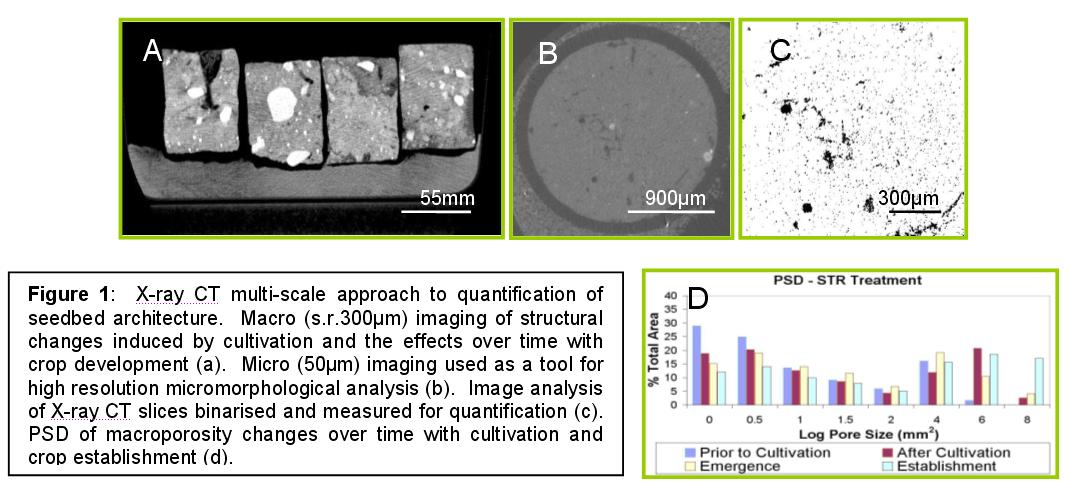
Saturday, 15 July 2006
136-6
A Multi-Scale Approch for the Assessment and Quantification of Seedbed Soil Structure.
Brian. S. Atkinson, Sacha. J. Mooney, and Debbie. L. Sparkes. Agricultrural and Environmental Sciences, School of Biosciences, Univ of Nottingham, University Park, Nottingham, NG7 2RD, United Kingdom
Seedbed preparation is crucial to crop establishment, growth and ultimately yield. As such a great deal of consideration needs to be given to the ideal structural environment for seedling germination, growth and establishment. The interaction of soil physical properties and the plant root system are a vitally important consideration in this process since these are directly linked with seedbed quality. However, little is known regarding how soil structural changes induced by management practices influence establishment. Advances in the visualization of soil porous architecture particularly utilizing X-ray Computed Tomography (CT) both at macro and micro scales have enabled assessment of soil structural attributes in a realistic and quantitative manner. Seedbed preparation can involve a wide range of cultivation techniques from intensive to reduced, each producing different structural arrangements, in terms of porosity, both at the macro and micro scales. As a result the variety of aggregation can range from fine to coarse tilths. The structural arrangement produced under cultivation affects temperature, water content, oxygen availability, strength and resistance of the soil and therefore the performance of the seedbed. A multi-scale approach to quantify soil seedbed structure was used obtaining data from field trials (using undisturbed soil cores) and controlled glasshouse experiments. X-ray CT was used at both the macro (c.300Ám) and micro (c.50Ám) scales in the assessment of seedbed architecture on a range of treatments and cultivations (see Figure 1). Unlike previous studies, which have concentrated on only physical measurements within the field, we have been able to quantify the actual structures created by different cultivation techniques. The results identified significant (p <0.001) effects of cultivation on the seedbed and crop establishment. It was observed that porosity increased over time with the greatest changes on seedbed soil structure occurring at the initial cultivation and crop establishment stages. Root interactions within the soil can be observed and conclusions produced that will ultimately develop greater understanding of soil physical quality created by cultivation. This in turn can lead to the identification of optimum architectural conditions for seed germination and crop establishment. This approach provides data not obtainable by other means and may ultimately provide the basis for developing and introducing seedbed management practices that can be used as guideline basis for soil management/conservation directives.

Back to 2.1A Soil Structuring as a Dynamic Process and Particles Transfer - Poster
Back to WCSS
Back to The 18th World Congress of Soil Science (July 9-15, 2006)